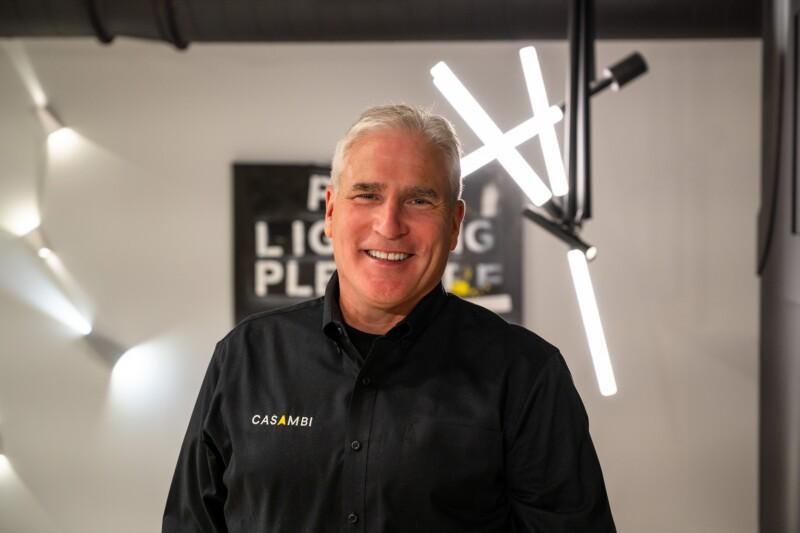Why Bluetooth Low Energy could kick-start adoption of smarter lighting

Wouldn’t it be great if you could simply walk into a room and have the lights adjust to your exact preferences? Or to change the lighting settings in a room with a few taps on your smartphone, tablet or wearable? And how about having those lights go off automatically when you leave the room?
These are just three examples of the way smart lighting can help make our homes, offices and public buildings more comfortable and energy-efficient. But while there’s been plenty of talk of smart lighting, actual installations remain relatively rare.
Where such systems have been trialled, they’ve typically used Wi-Fi or ZigBee for wireless control. And these technologies have drawbacks when it comes to smart lighting that help explain why we haven’t seen many implementations.
ZigBee and Wi-Fi: limitations for smart lighting
ZigBee, for example, isn’t built into most mobile devices. This means any ZigBee-controlled lighting system needs some kind of gateway to interface between the lights and the control device. This additional kit drives up cost and complexity, while adding a single point of failure to the system.
So what about Wi-Fi, which is built into pretty much every mobile device in use today? The issue here is that you can only connect to one Wi-Fi network at a time, which will typically be the one you use for internet access. The lighting system then either connects directly to the router via Wi-Fi, or via its own dedicated gateway, perhaps using ZigBee. In both cases, you’ve got one or more single points of failure in your system.
What’s more, both ZigBee and Wi-Fi are prone to interfering with one another. Getting a ZigBee-based lighting system to communicate reliably with your control device via a Wi-Fi gateway can be tricky.
So if Wi-Fi and ZigBee aren’t ideal for smart lighting, what other technology could be used to enable more of us to enjoy the benefits?
Enter Bluetooth Low Energy
Bluetooth Low Energy (BLE, or Bluetooth Smart) is part of the Bluetooth standard, created primarily for Internet of Things (IoT) applications. It has a number of characteristics that combine to make it ideal for smart lighting.
First off, BLE support has been standard in most mobile devices for several years, and is the only low-power radio technology where this is the case. Consequently, there’s no gateway required between a BLE-based smart lighting system and the control device: you can control such a system directly from your smartphone, while remaining connected to your Wi-Fi network and other Bluetooth kit.
Second, BLE also uses Frequency Hopping Spread Spectrum (FHSS) modulation, which makes it less interference-prone.
Mesh networks
BLE enables so-called ‘mesh networks’, where connected devices (nodes) communicate with one another directly, rather than all traffic going via a central router. While ZigBee also enables mesh networking, the advantage of BLE is that you don’t need a gateway (which becomes a single point of failure) between the mesh network and the controlling device.
Meshing provides a high degree of robustness, because complete network state information is kept in every node and the network can self-heal. This means there are no single points of failure and you can still control your lighting system even if a node becomes unavailable.
Smarter setups
Other characteristics and technologies around BLE further strengthen its suitability for smart lighting. Take beacons, for example. These detect when a BLE device (such as your smartphone) comes within range. In the context of lighting, this means you can create luminaires that come on when someone walks into a room – or lighting that ‘follows’ you around your house or another building.
Better still, your lighting system could be configured to activate a pre-defined scene when you enter a room, and a different scene when someone else does, based on your individual preferences or uses of the room.
Other applications could be in a museum or gallery: the beacon in a smart light over a display could do two things: switch on the light as someone approaches the exhibit, then trigger a guide app on the person’s phone to display information about what they’re looking at.
Taking smart lighting further
Smart lighting continues to evolve, pushing the boundaries of what’s possible: new-generation connected lighting systems now enable you to incorporate sensors into luminaires. These can collect a variety of data and send it to the cloud, from monitoring ambient light and humidity levels to tracking the numbers of people passing through different parts of your buildings. By analysing this data, you can derive valuable insights that enable you to respond accordingly, both through the lighting system itself and beyond: think crowd management or delivering targeted marketing messaging
In summary: Enabling truly innovative lighting
Bluetooth Low Energy combines a set of characteristics perfect for smart lighting. With no need for a dedicated gateway device, it helps reduce system cost and complexity and removes what would otherwise be single points of failure. And by harnessing the power of beacons and other complementary technologies, lighting designers can create some truly transformative systems that drive take-up and improve the way we live and work.


